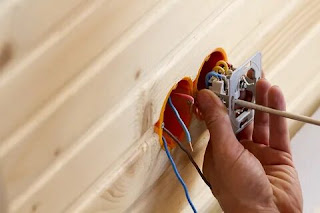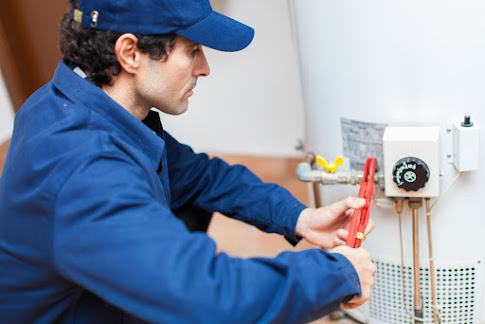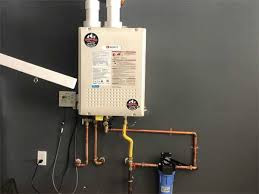What is the biggest mistake people make when installing electrical outlets?
Installing electrical outlets may seem like a simple task, but there are a few mistakes that people commonly make. In this blog post, we will discuss the biggest mistake people make when installing electrical outlets and how to avoid it. Keep reading to learn more!
#1: Using the wrong outlet type
When installing an electrical outlet, it's very important to choose the right type. You can install either a GFCI (ground-fault circuit interrupter) or AFCI (arc fault circuit interrupter). A GFCI detects overheating and other anomalies in the current. An arc fault interrupts both the voltage and current in a circuit when it detects an unusual arc.
AFCIs are newer, so they're usually more expensive than GFCI outlets. However, they can prevent fires that might occur behind walls or near doors where you don't see them right away. AFCIs have been required in new construction since 2008.
#2: Plugging multiple plugs into a single outlet
Plugging in too many appliances into a single electrical receptacle causes the circuit's wiring to overheat, which can lead to fire. The National Electric Code (NEC) requires that not more than three prong outlets be used for temporary power taps. If you need additional electrical outlets, it is recommended that you hire a qualified electrician to install additional circuits or receptacles.

#3: Not installing an outlet in the right location
The NEC requires that electrical outlets be installed within reach of the intended use. This means if you're plugging something into an outlet for convenience, it must be readily accessible from a standing position. You can't place the outlet under a counter, for example.
The NEC also requires you to install electrical outlets so that they don't interfere with permanent construction, such as ceiling beams or fireplaces. It's important to have outlets located near fixtures where you'll be plugging in lights and appliances. For homes being built from scratch, electrical outlets should be installed at least within 3.5 feet of the floor.
#4: Not using a receptacle tester before installing an outlet
The NEC requires that all electrical outlets are tested before being covered with any type of wall material. This not only ensures that the wires are connected correctly, but it also provides protection against shock. A receptacle tester is a simple device that plugs into an outlet to verify the wiring and check for proper grounding.
#5: Using knock-outs instead of screw terminals
To install AC or DC electrical wiring, you'll need to punch out holes in studs, metal housings, and other structures. However, some electrical wire installers will instead use screw terminals, which can lead to future problems.
It's important that you punch out holes in the correct location so as not to block any wiring inside a housing or behind a wall. It's also necessary that you have enough space for the wires coming from the breaker panel and where they terminate into modules on the switch or receptacle.

#6: Installing metal plates over electrical outlets in wet conditions
It's important to avoid installing metal plates over electrical receptacles, which could cause a shock risk. This is particularly the case if the outlet is located near plumbing fixtures or other moist areas - such as showers, tubs, and sinks. There are special weatherproof, non-metallic outlet plates available that can protect electrical outlets in wet conditions.
You should always know how to shut off the power before working on any electrical project. And it's important to label all wires with tape to prevent confusion when you reassemble them.
#7: Turning the breaker off instead of unplugging appliances
You might be tempted to just flick the breaker off when you're done using an appliance. However, before you do this, it's important to unplug appliances, which will clear the power circulation for safety reasons. If you shut off the breaker instead of unplugging something, there will still be electricity flowing through the wiring, which could cause a shock risk.
Most household appliances are designed to be used with 120 volts of alternating current (AC). It's important that you don't try to use 220-volt appliances on a 120-volt circuit or vice versa, since this can damage the outlet and pose a fire hazard.
#8: Not keeping your home's electrical equipment up to code
Even if you're an experienced do-it-yourselfer and you think you can install electrical outlets without following the NEC, it's important that you know what the code is for your area. For example, some localities forbid running AC power behind a wall. If you're not sure of the requirements where you live, hire a licensed electrician to make sure everything's up to code.
This is particularly the case when it comes to using a generator during a power outage. It can be tempting to run an extension cord from a house outlet into a tent for use by camping lights and appliances. However, this type of wiring isn't designed for outdoor use and can lead to shock risks when it comes in contact with water.
To prevent tripping hazards, the NEC requires that outlets placed in walking paths - such as hallways or stairwells - face up. Outlets installed away from walking paths should be covered if they're too close to the floor so you won't accidentally step on the cord.
conclusion: The biggest mistake people make when installing an electrical outlet is not getting a permit. Make sure you get the proper permits and inspections before starting any work on your project, or else you may be in violation of some safety codes and could cause big problems for yourself down the line. Electrical outlets are important to have installed properly because they provide power that we need for things like cooking food, running electronics, air conditioners, heating systems, etc., so it really pays off to follow all the rules!
Author Bio:- Robert Wong
Robot is a marketing manager at EZ Electric. He has an interest in writing articles related to HVAC installation, maintenance, and repairs. The HVAC system has made our life convenient regardless of the climatic changes. Read Robot’s articles to know step-by-step installation guide for ceiling fan, smoke detector, lighting and electrical appliances in California as well as how to repair them in case of malfunctioning or breakdown.



Comments
Post a Comment